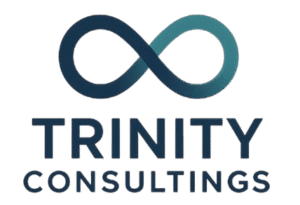Access to capital is a vital element for the growth and sustainability of any business. Whether you are a startup founder or an experienced entrepreneur, business lending provides financial solutions designed to assist businesses in scaling, managing operational expenses, acquiring inventory, or addressing cash flow shortages. In this detailed guide, we will guide you through the fundamentals of business lending, the various types of loans that are available, how to qualify for them, and the best strategies to enhance your likelihood of approval.
What is Business Lending?
Business lending is the act of obtaining funds specifically for business-related activities. These types of loans are usually provided by banks, credit unions, online lenders, and other alternative financing organizations.
Business loans can be short-term or long-term and are designed to help businesses with:
- Startup capital
- Equipment purchase
- Inventory management
- Marketing and expansion
- Payroll and operating expenses
Why Business Lending Matters
Cash flow is essential for the survival of any business. Even companies that are making a profit can encounter cash shortages because of late payments or unforeseen costs. Business loans can help fill those financial voids, enabling businesses to stay competitive and agile.
Here are some benefits of business lending:
- Fast growth: Immediate access to capital fuels faster expansion.
- Cash flow support: Smooths out irregular income cycles.
- Credit building: A solid repayment history improves your business credit score.
- Flexibility: Lenders offer customized repayment schedules.
Types of Business Loans
Understanding your options is key to selecting the right loan for your needs. Here are the most common types of business lending:
1. Term Loans
Term loans provide a lump sum of money repaid over a fixed period with interest. These are ideal for funding large one-time investments like equipment or renovations.
2. SBA Loans
Backed by the U.S. Small Business Administration, SBA loans offer favorable rates and terms but come with a more extensive application process. Popular SBA loan types include 7(a) loans and microloans.
3. Business Lines of Credit
This revolving credit works like a business credit card, where you can borrow up to a set limit and only pay interest on the amount used. Great for handling short-term needs.
4. Equipment Financing
Used specifically to purchase equipment or machinery. The equipment often serves as collateral.
5. Invoice Financing
Also known as accounts receivable financing, this option lets businesses borrow against unpaid invoices to improve cash flow.
6. Merchant Cash Advance
Involves borrowing against future sales. This is a quick but more expensive way to access capital, often used by businesses with high credit card transaction volumes.
How to Qualify for a Business Loan
Qualifying for a business loan depends on multiple factors. Here’s what most lenders look for:
- Credit Score: Both personal and business credit scores matter. A higher score improves your chances.
- Business Plan: A solid, detailed business plan that outlines how the funds will be used.
- Revenue & Cash Flow: Consistent revenue and a healthy cash flow show that your business can repay the loan.
- Time in Business: Lenders prefer businesses that have been operating for at least 6 months to 2 years.
- Collateral: Some loans require collateral (e.g., property, equipment) to secure the funds.
Tips to Boost Loan Approval Chances
- Improve Your Credit Score: Pay off debts and keep your credit utilization low.
- Gather Financial Documents: Prepare tax returns, bank statements, balance sheets, and income statements.
- Have a Clear Purpose: Clearly articulate why you need the loan and how it will benefit the business.
- Choose the Right Lender: Not all lenders are created equal. Compare options for the best rates and terms.
- Start with Smaller Loans: Build a repayment track record with smaller amounts before applying for larger sums.
Business Lending vs. Personal Lending
While it may be tempting to use a personal loan for your business, separating personal and business finances is crucial. Business lending not only keeps your finances organized but also builds your business credit profile, which is essential for long-term growth.
The Future of Business Lending in 2025
The lending landscape is evolving rapidly with the rise of fintech platforms, AI-based underwriting, and blockchain-based loan management. In 2025, expect more:
- Speedy Approvals: Many lenders now offer funding within 24-48 hours.
- Alternative Financing: Crowdfunding and peer-to-peer lending are gaining traction.
- Flexible Requirements: Lenders are increasingly evaluating alternative data (like online sales or customer reviews) to assess creditworthiness.
Conclusion
Business lending goes beyond merely borrowing funds—it’s a strategic asset that can drive growth, enhance stability, and foster innovation. Whether you’re starting a new venture or scaling an existing business, securing the appropriate loan can have a profound impact.
Before applying, do your homework, know your numbers, and choose a lending partner that aligns with your goals. If you need more information, you can contact Trinity Consultings. Our expert team will guide you.
